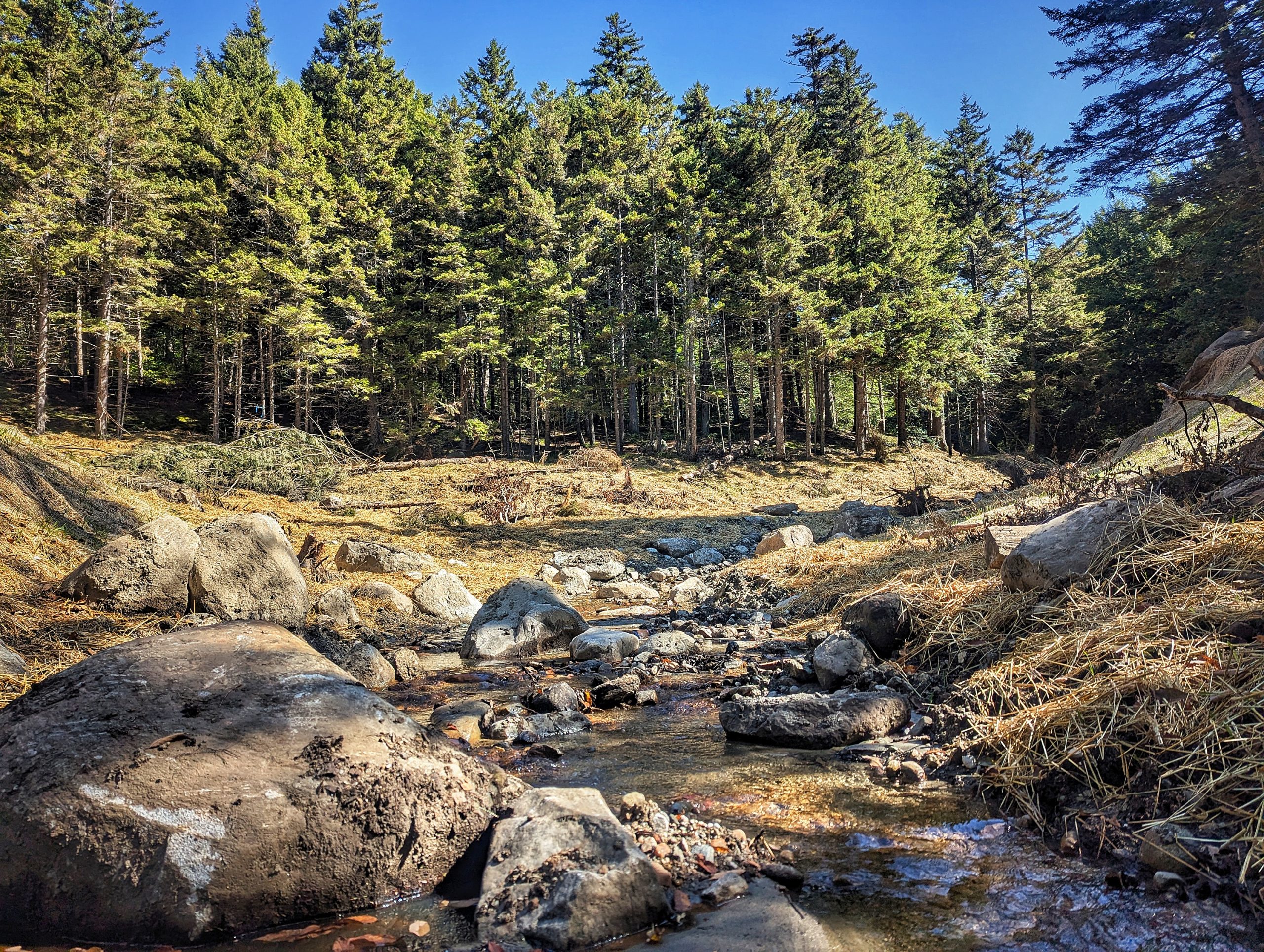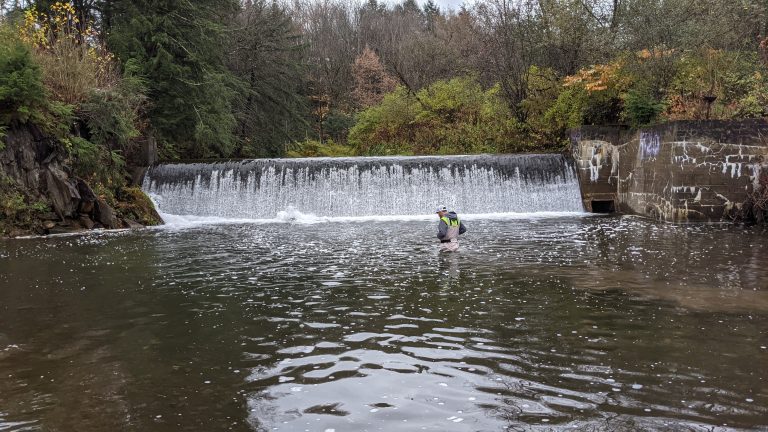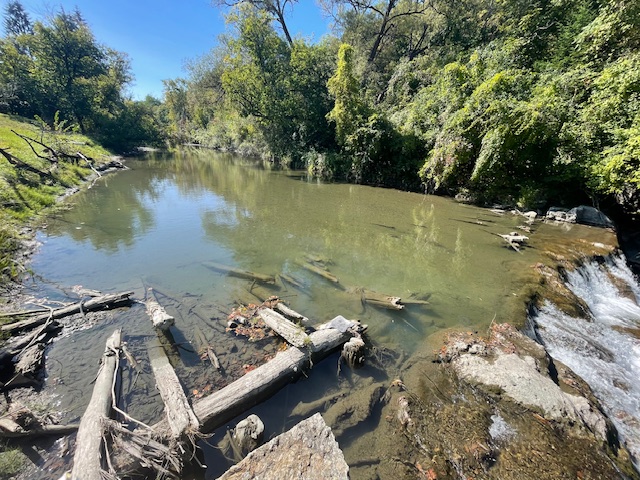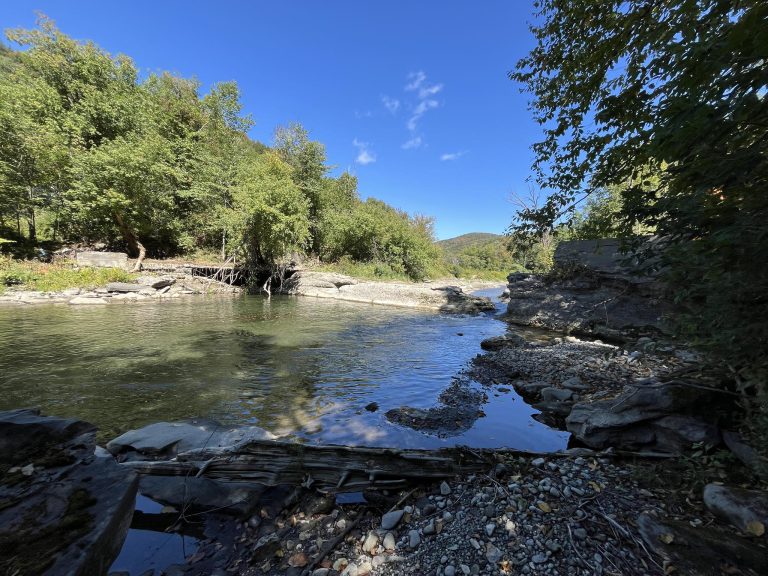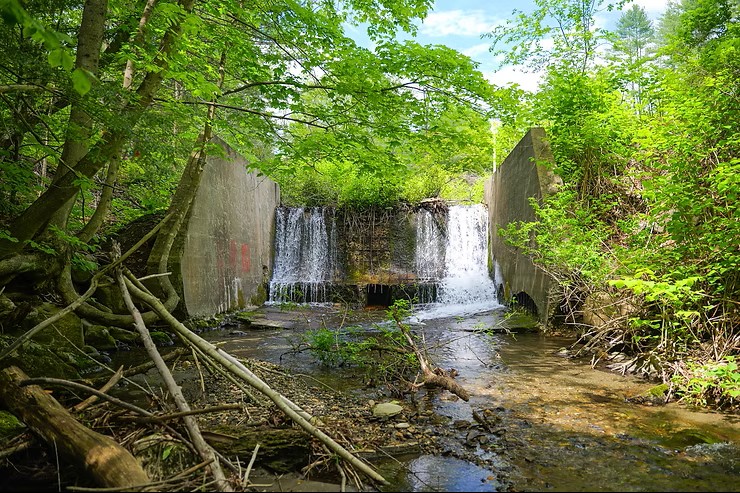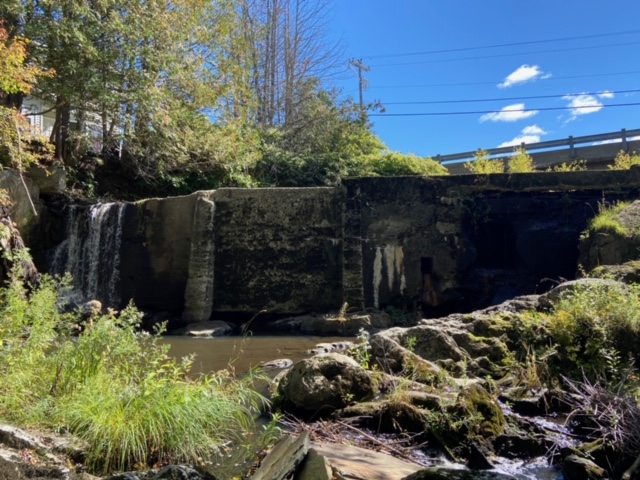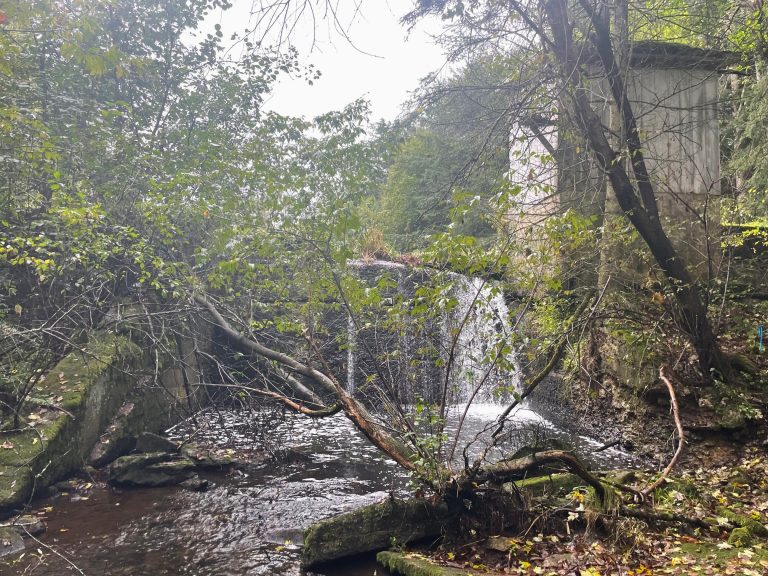Breadloaf Dam, Ripton (2025)
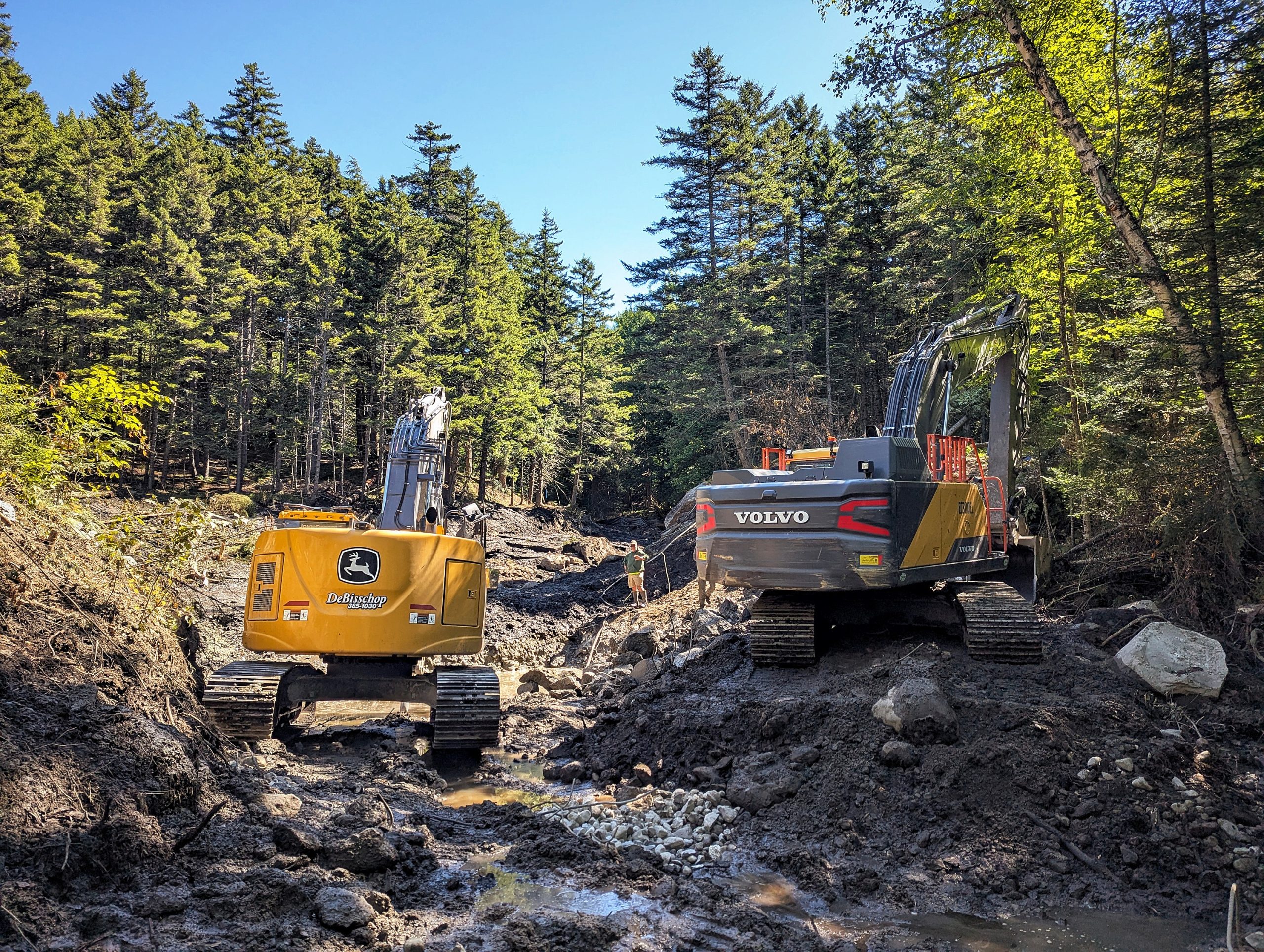
In August of 2025 the Breadloaf Dam along Brandy Brook in Ripton, VT was successfully removed. This project was managed by VNRC in partnership with the landowners, Middlebury College, the engineers SLR Consulting, and the Goodhue Excavating. The Breadloaf Dam was constructed in 1937 as a water supply reservoir for Middlebury College’s Breadloaf Campus. VNRC and partners were able to use the original blueprints for the dam in order to infer the natural topography of the Brandy Brook and its floodplain prior to dam construction, which informed restoration design plans. The removal of this 175 foot long and 25 foot high concrete dam reconnected 3 miles of high-quality brook trout habitat and reconnected the Brandy Brook back to the Middlebury River.
Approximately 4,000 cubic yards of impounded sediment were excavated from behind the dam, a 400 ft pilot channel was constructed, and half an acre of floodplain re-graded and seeded down with a native seed mix. Future restoration will include a tree and shrub planting by Middlebury College students. The re-vegetation work will promote the long-term stability of soils, restore the river corridor, and will help create floodplain habitat structure. The river will be given time to find its own equilibrium as it resumes its natural flow and sediment transport regimes.
This project not only significantly improved habitat for aquatic species like brook trout and aquatic macro invertebrates who are the backbone of the river’s food web, but it also has positive impacts on the neighboring beaver population. By removing the dam and restoring river connectivity, it will help facilitate travel for dispersing beavers looking for new homes and improved habitat access. The multispecies benefits of this restoration project are widespread from fish, to mammals, to insects, showing that reconnecting our rivers provides habitat improvements for a myriad of wildlife. On top of improved instream and riparian habitat, this dam removal will also improve water quality, and foster flood resilience through additional flood storage that will naturalize downstream movements of floods and sediment.
VNRC thanks the partners listed above along with our funders Vermont Emergency Management through the Flood Resilience Community Fund, NEIWPCC in partnership with the Lake Champlain Basin Program, and the US Fish & Wildlife Service for making this project possible.
Photo Courtesy of VNRC
